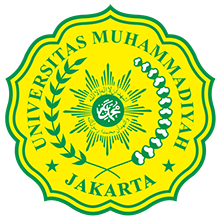PEMANFAATAN UAP KELUARAN EVAPORATOR UNTUK PENGERINGAN AMPAS TEBU BAHAN BAKAR PABRIK GULA
Abstract
Have been factors that influence on the use of the baggase as fuel. One of them is water contained in the baggase. A sugar factory in Lampung Tengah district is PT Gula Putih Mataram, produce baggase in contained water by 50,10%. The purpose of this research is to know the number of water to levels unloaded on baggase by using heat from steam exodus evaporator. know influence the flow hot air to the water level of optimal for flow of steam exodus evaporator, used to draining bagasse. Know time drying to influence the water level and time best of process of drying bagasse, use of heat from the exodus steam evaporator. And the research methodology used data processing. Where data is collected of direct observation in PT Gula Putih Mataram, and study literature in the form data of a journal before. Using a hot vapor exodus evaporator in heat exchanger, rate obtained hot air flow 36.296,62 kg/hours, with 40°C temperature. Next hot air is used as air dryer in rotary dryer. Air dryer to flow of 32 tons/hours, 33 tons/hours, 34 tons/hours, 35 tons/hours and 36 tons/hours, obtained the the water level of 45,05%; 44,89%; 44,73%; 44,58% and 44,42%. With sample 36 tons/hours take 5 sample drying time. That is 1 hours, 2 hours, 3 hours, 4 hours and 5 hours, and is found the water levels by 44,42%; 38,74%; 33,06 %; 27,38% and 21,70%. Of the results of data processing shows variations in the drying time flow hot air and give a linear variation to the moisture content of reduced the number. Where the bigger the flow air dryer will increase the moisture content of which can be reduced. And time for drying, the longer the drying hence the larger the to amount to the moisture content of which can be reduced.
Keywords
Full Text:
PDFReferences
Achmad Faisal Faputri, 2016, “Desain Evaporator dan Pengujian Kondisi Operasi Optimal dan Desain Peralatan”, Jurnal Teknik Patra Akademika Vol 7. No. 2 Desmber 2016. Politeknik Akamigas Palembang.
Adnyana, dkk, 2001, “Dinamika dan Antisipasi Pengembangan Komoditas Tanaman Pangan, Prosiding Perspektif Pembangunan Pertanian dan Kehutanan Tahun 2001,” Jakarta: Departemen Pertanian
Aliwarga Lienda, Setyo Kusumo Widhi, Agung Pramono, “Pengaruh Temperatur dan Tekanan dalam proses evaporasi Asam 6-Aminopenisilinat”, Jurnal Rekayas Bahan Alam dan Energi Berkelanjutan Vol.3, No.1, 2019, Hal 12 – 19, Institut Teknologi Bandung.
Amornrat Kaewpradap, Wasan Yoksenakul, Sumrerng Jugjai, “Effects of Moisture Content In Simulated Baggase by Equilibrium Analysis” TSME International Conference On Mechanical Engineering, King Mongkut’s University Of Thecnology Thonbury, Bangkok, Thailand.
Andrzejewskia, Brett., Gillian Eggleston, dan Randall Powell. 2013. “Pilot plant clarification of sweet sorghum juice and evaporation ofraw and clarified juices.” Industrial Crops and Products 49, 648– 658.
Catur Sugiyanto, 2007, “Permintaan Gula Di Indonesia”, Jurnal Ekonomi Pembangunan, Vol.8, No.2, Desmeber 2007, Hal. 113 – 127, Universitas Gadjah mada.
Giri Nurgoho, Ilham Fuchoiroh, Mashuri, Hari Subiyanto, Rivai Wardhani, “Analisa Ampas Tebu Sebagai Bahan Bakar Boiler Pada Produksi Gula Tahun 2018 Di PG Krebet Baru II Malang”, Jurnal AMORI, Vol. 2/1 2021, Institut Teknologi Sepuluh Nopember.
Hutabarat, dkk, 2001, Restrukturisasi Industri Gula Nasional, Jakarta: Tim Pengembangan Industri Gula.
Istianah Nur, 2017, “Evaporasi Multi-Tahap Menggunakan Falling Film Evaporator(Ffe) Untuk Meningkatkan Efisiensi Produksi Konsentrat Nanas Madu”, 1 – 2 November 2017, Universitas Brawijaya.
Lora, E. S, F.P. Arrieta, R. Carrasco, LAN. Nogueira, 2000, “Clean production: Efficiency and Environment”, Int. Sugar Journal, 102.
Maranhao, LEC, 1980, “Individual bagasse drying system”, Proc of XVII ISSCT Congres, 3: 2000 – 2001
Muhammad Saechu, 2009, “Optimasi Pemanfaatan Energi Ampas dari Pabrik Gula (Bagasse Energy Optimation at Sugar Cane Plant)”, Jurnal Teknik Kimia Vol. 4, No. 1, September 2009, Pusat Penelitian Perkebunan Gula Indonesia
Saptyaji Harnowo, Yunaidi, “Kinerja Boiler dengan Sistem Pembakaran Bersama antara Ampas Tebu dengan Sekam Padi dan Cangkang Kelapa Sawit”, Jurnal Semeste Teknika, Vol.24, No.2, 102-110, November 2021,
Solikin, M Arif Batutha, “Metode Pengeringan Ampas Tebu (Baggase) Dengan Pemanfaatan Kembali Panas Gas Buang Boiler di PG. Pradjekan Bondowoso” Jurnal Penelitian dan Teknologi Vol.5, No.1, Juni 2019, Universitas Muhammadiyah Surabaya.
O. A. Rosyid, Pudjo W. H, Diding F, “Studi Penghematan Energi Pada Unit Ketel Uap Di Pabrik Gula”, Badan Pengkajian dan Penerapan Teknologi, Balai Besar Teknologi Energi, Kawasan Puspiptek Serpong, Tangerang, Indonesia.
DOI: https://doi.org/10.24853/jurtek.15.1.151-158
Refbacks
- There are currently no refbacks.





















